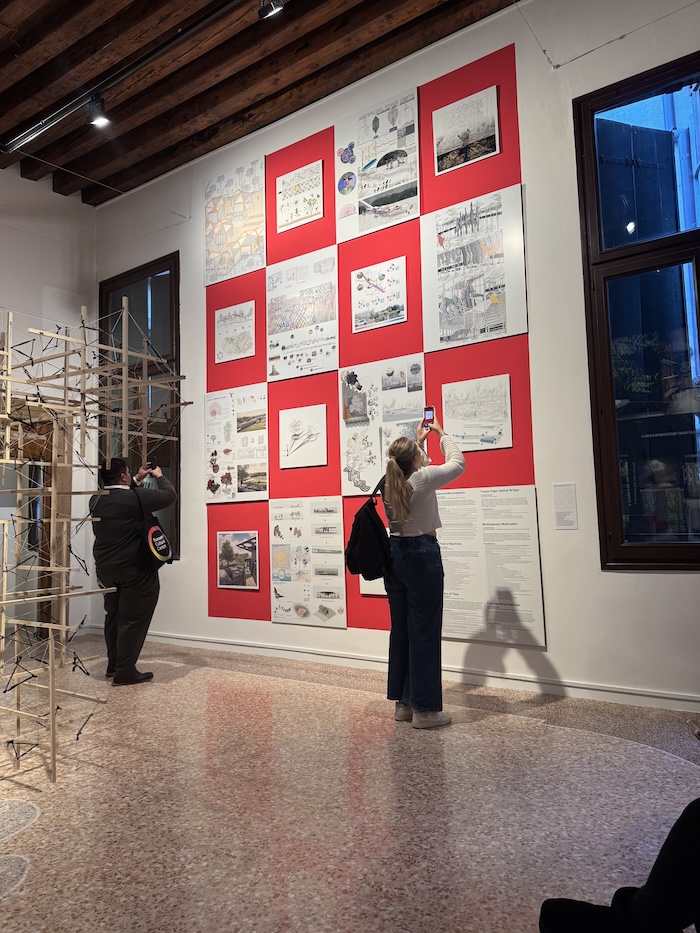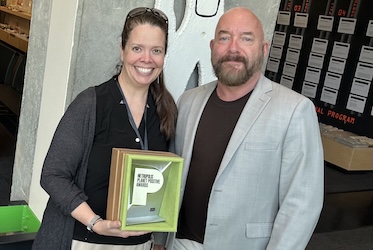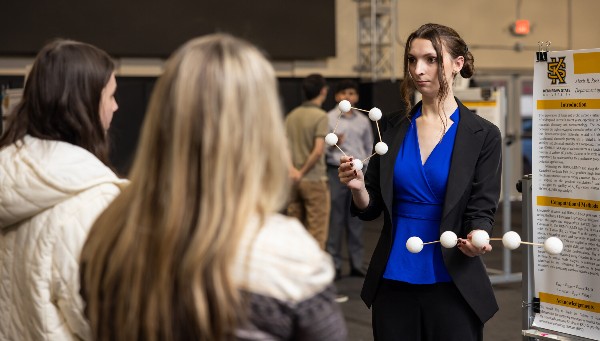

KENNESAW, Ga. | Jun 11, 2025

The installation titled “Design for the Shared Environment,” is featured in the Time Space Existence exhibition, an event aligned with the Venice Architecture Biennale and one of the most prestigious platforms in global design. The exhibition, hosted by the European Cultural Center through November 23, showcases work from world-renowned institutions like Harvard University, Columbia University, and ETH Zurich.
The project originated in a Fall 2024 focus studio led by Kathryn Bedette, professor and associate dean in KSU’s College of Architecture and Construction Management. The studio explored posthumanist design, a concept that encourages students to consider the built environment from the perspective of all living species.
“This studio allowed students to consider how buildings interact with the full biosphere, not just human occupants,” Bedette said. “It was about imagining architecture as something that engages with all forms of life.”
Students conducted research at the KSU Field Station, selecting specific plant, animal, or fungal species to design for, treating them as “co-clients” alongside human users. Their challenge was to create architecture that coexists with, rather than disrupt, existing ecosystems.
The international recognition highlights not only the strength of the students’ work, but also the college’s broader commitment to sustainable and socially responsive design.
“This international recognition reflects the depth of creativity and critical thinking we cultivate in our students,” said Hazem Rashed-Ali, dean of the College of Architecture and Construction Management. “It underscores our commitment to preparing future architects who can lead in addressing the world’s most pressing environmental challenges.”
The work of ten students was selected for the international exhibit, including Stephanie Le’s “B-Hive” a system designed to support the endangered rusty patched bumble bee.
“I used UV-visible patterns to help each bee recognize its own hive,” Le said. “It may seem like a small detail, but it shows that architecture can be thoughtful and precise, even for something as small as a bee.”
Robinson Badell-Garcia’s design explored how architecture could reflect movement and temporality, using bridges and research zones that responded to the motion of species across the site.
“The building became a breathing catalyst for life rather than an empty husk,” he said. “We designed it to be vulnerable to nature’s long-term influence.”
Lindsey Garcia focused on integrating materiality and environmental rhythms into the spatial framework.
“We wanted to create a space that coexists with nature, not one that dominates it,” she said. “Using materials like rammed earth allowed us to reflect the passage of time. The final design felt more like a living system than a finished product.”
For Abigail Yeagley, who centered her design on pollinator navigation, the experience revealed how even small ecological insights could inspire architectural choices.
“It taught me that architecture can impact more than we often consider, in both subtle and profound ways,” she said.
The studio continued into the spring semester through a directed study course, where selected students refined their designs, developed exhibit materials, and prepared their work for international display. This process introduced them to professional standards of production and exhibition design.
“Participating in a professional exhibition like this pushes students to elevate their work,” Bedette said. “They produced projects that are not only academically rigorous, but also relevant to global conversations.”
Curators and guest have praised the exhibit’s originality and the diversity of perspectives it presented around the theme of shared environments.
“The feedback has been overwhelmingly positive,” Bedette said. “Each project interprets the central theme differently with students creating a breadth of approaches to designing for the shared environment.”
– Story by Raynard Churchwell
Photo provided

Kennesaw State graduate builds a future few expected

Assistant professor wins Metropolis Magazine Planet Positive Award for sustainability

Environmental solutions take center stage at Symposium of Student Scholars

From Kennesaw to Capitol Hill, student earns front-row seat to federal policymaking process
A leader in innovative teaching and learning, Kennesaw State University offers undergraduate, graduate, and doctoral degrees to its more than 51,000 students. Kennesaw State is a member of the University System of Georgia with 11 academic colleges. The university's vibrant campus culture, diverse population, strong global ties, and entrepreneurial spirit draw students from throughout the country and the world. Kennesaw State is a Carnegie-designated doctoral research institution (R2), placing it among an elite group of only 8 percent of U.S. colleges and universities with an R1 or R2 status. For more information, visit kennesaw.edu.